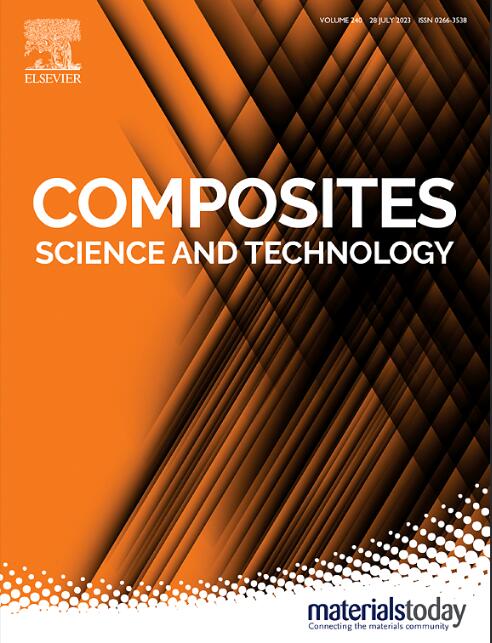MXene triggered double conductive mechanism hydrogels for strain sensing with electromagnetic interference shielding performance
IF 8.3
1区 材料科学
Q1 MATERIALS SCIENCE, COMPOSITES
引用次数: 0
Abstract
Highly conductive and super-tough acrylamide hydrogels are essential for the development of flexible electronics. However, the inherent electrical and mechanical deficiencies of polyacrylamide (PAM) impede their utilization in flexible electronics. To address this challenge, a novel double-crosslinking method for rapid gelation based on an MXene-initiated poly (acrylamide/vinylimidazole) (MPAV) system is presented in this paper. MXene rapidly initiated the copolymerization of acrylamide with ionic liquids and acted as a physical cross-linking point for dynamic and reversible physical interactions with the polymer chains. The copolymerization of ionic liquids solved the problem of MXene aggregation in the medium and enabled the ionic conductivity mechanism of directional movement of free ions inside the MPAV hydrogel. MPAV hydrogels exhibited high electrical conductivity (2.28 S/m), excellent electromagnetic interference shielding efficiency (SEt > 35 dB), and sensitive strain sensing properties (maximum gauge factor: 14.69 and maximum sensitivity: 0.124 kPa−1). The well-designed MPAV double crosslinked hydrogel also displays remarkable mechanical properties (elongation: 457 % and compressibility: 80 %) and self-healing capabilities.

具有电磁干扰屏蔽性能的MXene触发双导电机制应变传感水凝胶
高导电性和超韧性的丙烯酰胺水凝胶对于柔性电子产品的发展至关重要。然而,聚丙烯酰胺(PAM)固有的电气和机械缺陷阻碍了其在柔性电子产品中的应用。为了解决这一挑战,本文提出了一种基于mxene引发的聚丙烯酰胺/乙烯咪唑(MPAV)体系的新型双交联快速凝胶化方法。MXene迅速引发了丙烯酰胺与离子液体的共聚,并作为与聚合物链进行动态和可逆物理相互作用的物理交联点。离子液体的共聚解决了MXene在介质中的聚集问题,实现了自由离子在MPAV水凝胶内部定向运动的离子电导率机制。MPAV水凝胶具有高电导率(2.28 S/m)、优异的电磁干扰屏蔽效率(SEt >;35 dB),具有灵敏的应变传感性能(最大测量因子14.69,最大灵敏度0.124 kPa−1)。精心设计的MPAV双交联水凝胶还具有显著的力学性能(伸长率为457%,压缩率为80%)和自修复能力。
本文章由计算机程序翻译,如有差异,请以英文原文为准。
求助全文
约1分钟内获得全文
求助全文
来源期刊

Composites Science and Technology
工程技术-材料科学:复合
CiteScore
16.20
自引率
9.90%
发文量
611
审稿时长
33 days
期刊介绍:
Composites Science and Technology publishes refereed original articles on the fundamental and applied science of engineering composites. The focus of this journal is on polymeric matrix composites with reinforcements/fillers ranging from nano- to macro-scale. CSTE encourages manuscripts reporting unique, innovative contributions to the physics, chemistry, materials science and applied mechanics aspects of advanced composites.
Besides traditional fiber reinforced composites, novel composites with significant potential for engineering applications are encouraged.
 求助内容:
求助内容: 应助结果提醒方式:
应助结果提醒方式:


